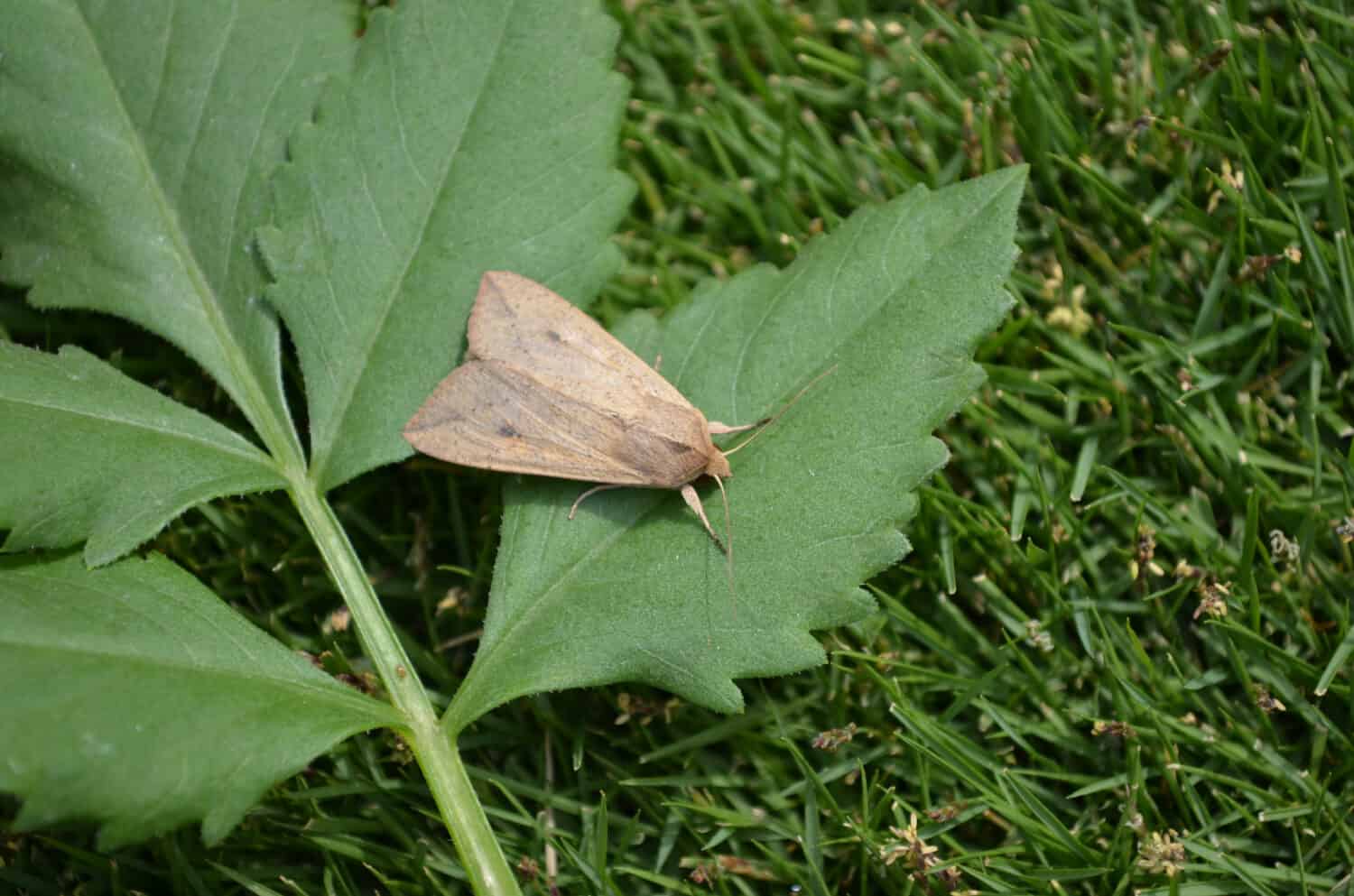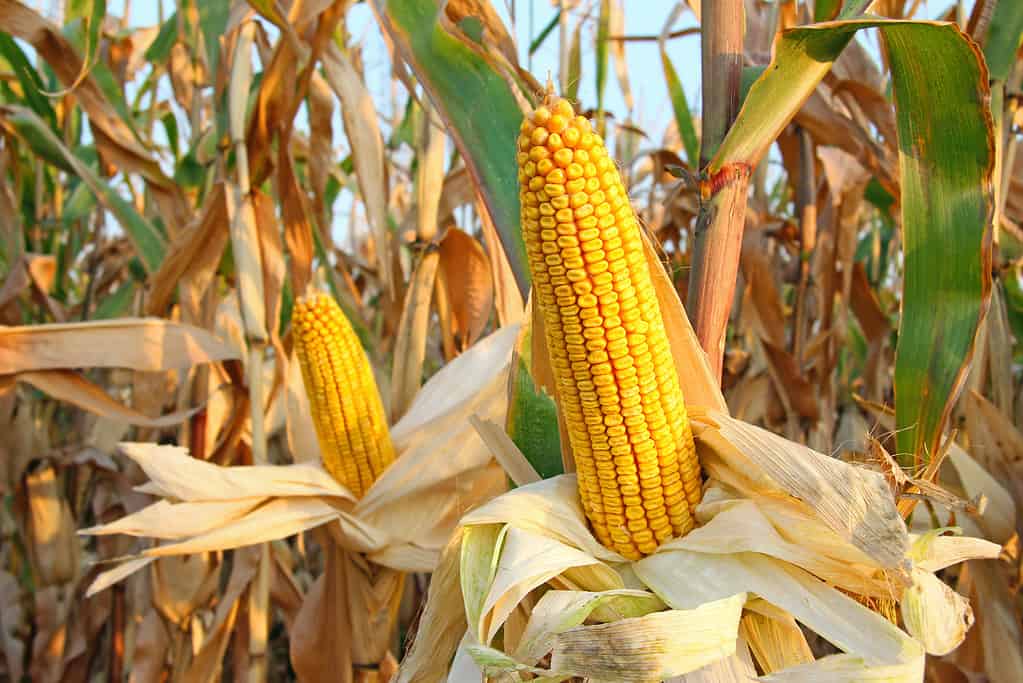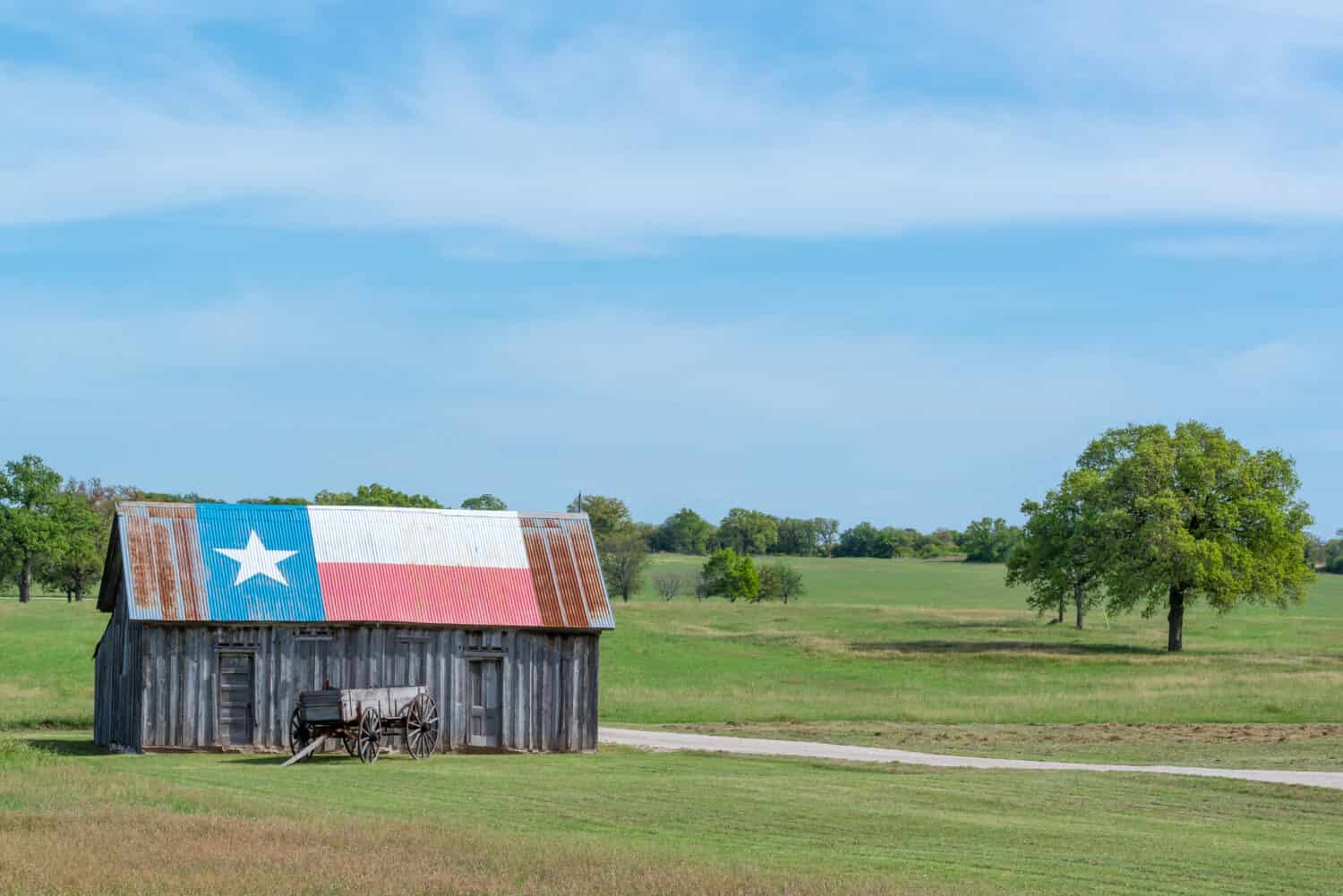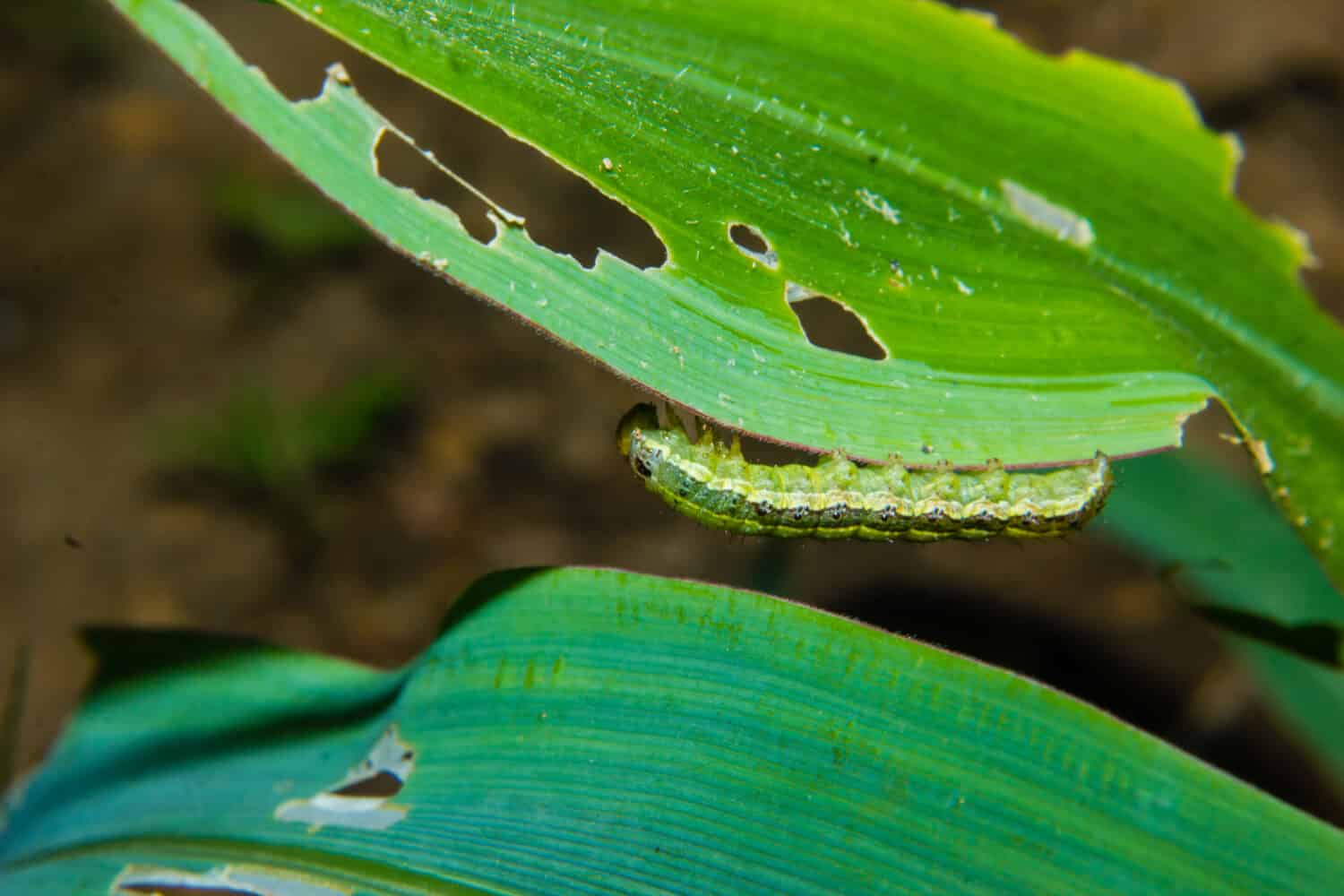Armyworms are voracious little insects that get their name because of the large groups they travel in and the destruction they leave in their path. Those living in the Southeastern United States are well aware of the ruin the plant-eating larvae impose on farms and gardens.

All mature armyworms have an inverted Y on the front of their head capsule.
©kale kkm/Shutterstock.com
With the fall armyworm season approaching, let’s take a look at what the insect eats, what threats they pose, and how they affect Texas.
What Are Fall Armyworms?
Fall armyworms (Spodoptera frugiperda) are the larvae of owlet moths belonging to the Noctuidae family. The nocturnal armyworm moths lay their eggs by the hundreds when they migrate north in the spring.
Life Cycle
The armyworm life cycle varies in time depending on the season. Typically, the cycle is complete after 30 days in the summer and about 60 days in the spring and fall.
Egg: The female moth lays eggs in masses of about 100-200 and can lay up to 2,000 eggs in her lifetime. The eggs are dome-shaped with a flat base area and spread in a single layer mass on grass or the folds of leaves. The egg stage only lasts a couple of days.
Larva: This is the stage where armyworms do the most damage to crops, fields, and gardens. They can grow up to 2 inches and vary in color. Mature larvae have a white inverted Y on their faces. This stage lasts up to 30 days during cooler months and about 14 days in the summer.
Pupa: The larva constructs a cocoon about 2-8 centimeters underground. It uses particles of soil and silk to build its loose cocoon. When the soil is too firm to burrow underground, the larva constructs a cocoon above the ground with leaf particles and other materials. The pupal stage lasts 8-9 days in the summer and up to 30 days in colder months.

Fall armyworm moths can fly up to 62 miles in one night.
©Bhupinder Bagga/Shutterstock.com
Adult: The armyworm moth has an average wingspan of 1.5 inches. Male moths have a more distinct wing pattern than the females. The forewings are brownish with white spots near the tip, and the hind wings are shimmery white or gray. Adult life ranges from 7-21 days.
What Do Fall Armyworms Eat?
A fall armyworm’s diet depends on which stage of life they are in. It feeds on almost all vegetation in its path during the larval stage, which makes it such a destructive insect. However, an adult fall armyworm moth does not cause plant damage as it only feeds on flower nectar.
The most common plants armyworms are known to feed on include grass, corn, and small grains.

Corn plants with skeletonized leaves are a sign of an armyworm infestation.
©iStock.com/branex
List of Crops Fall Armyworms Feed On
- Corn
- Sorghum
- Cotton
- Wheat
- Forage grass
- Ripe fruit
- Flower nectar
- Oat
- Rice
Where Do Fall Armyworms Live?
Fall armyworms thrive in warm and humid climates. They can be found throughout the eastern and southern regions of North America and South America. The insects overwinter in the most southern points of Texas and Florida, where temperatures remain warm enough for survival. The strong-flying armyworms disperse farther north during the summer months and have been recorded in almost every state east of the Rocky Mountains.
Although native to the Americas, fall armyworms were reported in western Africa for the first time in 2016. They have now become invasive species in Africa, Europe, and Asia.
Fall Armyworms in Texas

Fall armyworms are most abundant in Texas from August to early November.
©Paul Quinn/Shutterstock.com
After cool and rainy springs in Texas, forage and crop producers prepare to fight off the fall armyworms. Most damage is done in the late summer months, and the problem ends only when the first killing frost arrives. Although the colder weather in northern Texas will kill off many fall armyworms, the southern part of the state is one of the two places in the U.S. where they overwinter until the following spring.
Threats Posed by Armyworms
Fall armyworms are usually active during the early morning hours, late afternoon, and night. They will chew through almost every plant in their path, but they prefer to eat corn, sorghum, alfalfa, and forage grasses. While feeding, they will chew through all of the tender green material leaving only tough stems behind. Armyworms will occasionally make their way through corn husks, eventually eating all the corn inside.

Younger larvae only eat small amounts of a plant, leaving holes in the leaves.
©NokHoOkNoi/Shutterstock.com
Signs of a Fall Armyworm Infestation
- Skeletonized leaves
- Chewed grass or ragged-looking grass
- Discolored grass patches
- Increase of birds feeding on the lawn
- Caterpillar excretion in fields or lawn
- Heads of cereals or oats on the ground
How to Prevent Damage
It is important to spot the signs of a fall armyworm infestation before they cause economic damage to crop fields or yards. Younger larvae only chew through a small portion of tender greens, leaving a “windowpane” effect on leaves. But, once the caterpillar grows larger than ¾ of an inch, the plant consumption greatly increases. Luckily, several insecticides will kill off fall armyworms. It is important to follow the label instructions so it does not damage the crop.
Fall armyworms also have a few natural enemies, including birds, ground beetles, and flies. These animals, along with hot, dry weather, can reduce the number of armyworms. Even with all these minimizing factors, the only complete relief comes during the first frost of the season.
Thank you for reading! Have some feedback for us? Contact the AZ Animals editorial team.








